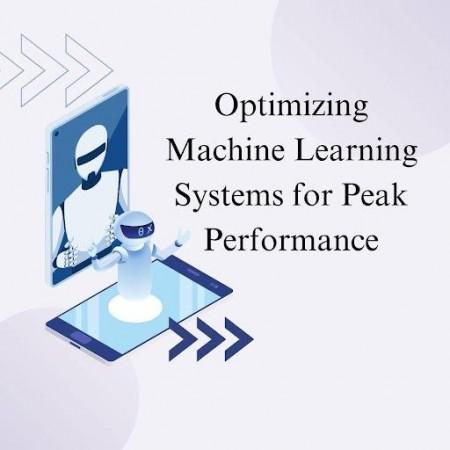
A cutting-edge framework for evaluating and optimizing machine learning (ML) systems has been developed by Santhosh Kumar Shankarappa Gotur, focusing on overcoming the unique challenges these complex systems face in demanding production environments and consistently providing innovative, scalable solutions to enhance their performance and operational efficiency.
Measuring Key Performance Metrics
Optimizing ML systems requires monitoring latency, throughput, scalability, and resource utilization, providing critical insights into performance, ensuring efficiency, and addressing inefficiencies to enhance system adaptability and capacity before deployment.
Overcoming Performance Challenges
Technical Obstacles
Dynamic workloads in ML systems present a major challenge, with unpredictable request volumes requiring adaptable testing strategies. Hardware dependencies add another layer of complexity, as the performance of ML systems often hinges on specialized hardware like GPUs or TPUs. Furthermore, the data pipeline including preprocessing, feature engineering, and post-processing must be carefully evaluated for its impact on system performance.
Operational Barriers
Resource allocation in cloud-based environments is another challenge, especially for large-scale systems. Limited availability of computing resources often clashes with the need for robust performance, necessitating precise management strategies. Integration with external systems also requires meticulous planning to ensure seamless performance under real-world conditions.
Advanced Testing Methodologies
Load Testing for Realistic Scenarios
Specialized load testing tools are essential for simulating production-like conditions. These tools evaluate system behavior under both sustained and spiked workloads, capturing granular metrics across the inference pipeline to highlight potential bottlenecks.
Resource Profiling for Better Utilization
Resource profiling focuses on monitoring CPU, memory, and GPU usage during different operational scenarios. It tracks patterns such as memory allocation, threading behavior, and data transfer rates, identifying inefficiencies that could hinder system performance. This approach ensures the system uses computational resources effectively, even under high demand.
Optimization Techniques for ML Systems
Model Optimization
Techniques like quantization, pruning, and knowledge distillation are pivotal for improving model performance. Quantization reduces memory requirements and computational costs by converting high-precision weights into lower-precision formats. Pruning eliminates unnecessary neural connections to enhance efficiency, while knowledge distillation enables smaller, faster models to retain the performance of their larger counterparts.
Infrastructure Optimization
Infrastructure optimization involves dynamic resource allocation, load balancing, and leveraging specialized hardware such as GPUs and TPUs. These strategies improve processing speed, scalability, and overall system reliability, ensuring ML systems perform optimally in production environments.
Best Practices for Implementation
Benchmarking for Consistency
Setting benchmarks with clearly defined metrics and baselines is crucial for evaluating system performance. Baseline measurements under controlled conditions offer a reference point for continuous optimization, ensuring the system remains aligned with operational goals.
Monitoring for Continuous Improvement
Real-time monitoring tools are essential for identifying performance issues promptly, enabling swift corrective actions. By providing continuous insights into system health and behavior, they ensure optimal efficiency, reliability, and adaptability, even amidst dynamic operational conditions and increasing complexities in workflows.
Realizing Performance Gains
The framework has enabled organizations to achieve remarkable performance improvements, including latency reductions of up to 35% and throughput enhancements of 45%. Additionally, it has led to a 30% decrease in CPU usage and a 25% reduction in memory consumption, accomplished through optimized testing strategies and intelligent resource allocation.
Cost-Effectiveness
The cost-benefit analysis reveals that robust performance testing frameworks reduce downtime, improve user experience, and increase system reliability. Organizations have seen a positive return on investment within months, with long-term benefits such as lower operational costs and enhanced efficiency.
In conclusion, Santhosh Kumar Shankarappa Gotur's systematic approach to performance testing and optimization provides a robust framework for improving the efficiency and scalability of machine learning systems. By addressing technical and operational challenges, his research offers valuable insights for organizations striving to enhance their ML deployments and adapt to evolving demands.








![Sky is the limit: IndiGo is now tenth largest airline by capacity globally; growth indisputable [details]](https://data1.ibtimes.co.in/en/full/767455/sky-limit-indigo-now-tenth-largest-airline-by-capacity-globally-growth-indisputable-details.jpg?w=220&h=138)








